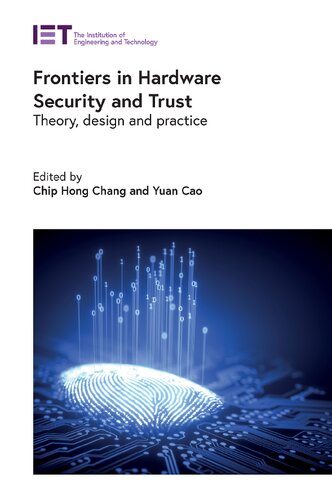

Most ebook files are in PDF format, so you can easily read them using various software such as Foxit Reader or directly on the Google Chrome browser.
Some ebook files are released by publishers in other formats such as .awz, .mobi, .epub, .fb2, etc. You may need to install specific software to read these formats on mobile/PC, such as Calibre.
Please read the tutorial at this link: https://ebookbell.com/faq
We offer FREE conversion to the popular formats you request; however, this may take some time. Therefore, right after payment, please email us, and we will try to provide the service as quickly as possible.
For some exceptional file formats or broken links (if any), please refrain from opening any disputes. Instead, email us first, and we will try to assist within a maximum of 6 hours.
EbookBell Team

4.0
46 reviewsFrontiers in Hardware Security and Trust provides a comprehensive review of emerging security threats and privacy protection issues, and the versatile state-of-the-art hardware-based security countermeasures and applications proposed by the hardware security community.
The footprint and power constraints imposed on internet-of-things end-points, smart sensors, mobile and ad hoc network devices make traditional and software based cryptographic solutions that require a general-purpose processor increasingly unfeasible. The fact that security is not the primary functionality of these devices means that only a small portion of their limited processing power and storage is available for security, driving the need for alternative security solutions. Hardware security - including hardware obfuscation, hardware security primitives, side-channel attacks and so on - is therefore becoming an increasingly active research area in both academia and industry.
This book discusses the fundamentals of reversible logics, hardware obfuscations, SAT resistant logic obfuscation, and design-for-security. Novel security primitives such as state-of-the-art true random number generators are also explored. Modern micro-architectural attacks enabled with the superscalar microprocessors and its countermeasures are analysed to shed light on how existing architectures can be fortified or made more robust against attack. The introduction of hardware security into cognitive radio networks, 5G networks and machine learning, which are widely considered to be the most promising major contributors to next wave of technological growth, are also discussed.
The book serves as an advanced reference for researchers on current hardware security problems, challenges and solutions.